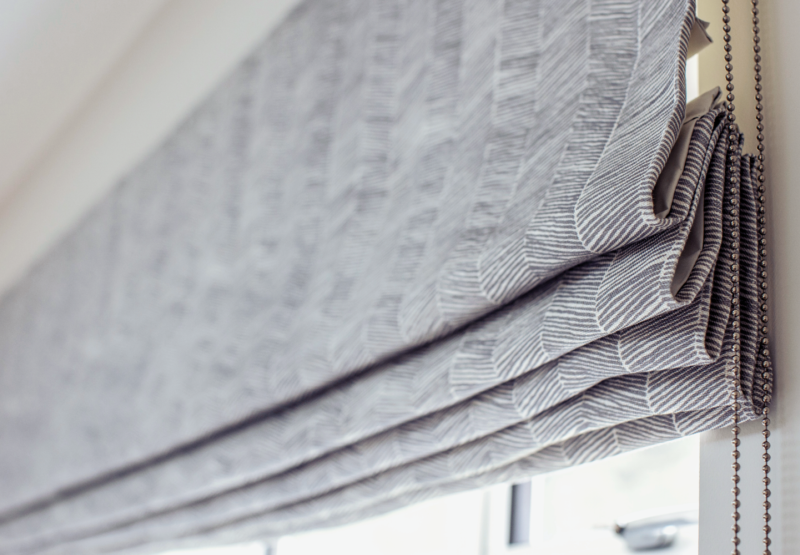How to choose fabric for roman blinds
One of the big benefits of roman blinds being made from fabric is the choices! There is a huge variety of fabrics to choose from and your choice can really change the look of your room. If you need help narrowing down the options, we’ve put together a few tips to help you choose colours and patterns, plus some info on how linings and fabric types can change how your roman blinds work.

Getting the look right
Generally, dark colours will make a room appear smaller, while lighter colours make a room feel larger. However, a dark coloured roman blind can perfectly contrast a light-coloured wall and provide a visual break.
If you’re after something a little more colourful, try choosing one main colour for the room, based on something prominent you already have, such as a piece of furniture or a piece of art. From there, layer different shades of the same colour or add in some complementary or contrasting colours as well.
roman blind's lay quite flat, so a patterned fabric is a great way to add some interest and break things up a bit. Vertical stripes are great for making your windows look taller and adding visual height to the room, however you’ll want to avoid horizontal stripes on roman blinds as they generally make windows look smaller.
Botanical prints that feature leaves, trees, flowers, etc. are a great way to bring a little nature (and personality) into a room. Botanical prints can range in style from soft and feminine to grand Victorian, meaning there’ll be something to suit your style. Just be sure to pay attention to the size of the print. Too large or too small can be distracting, depending on the size of the window.
Another type of pattern to consider is geometric! Abstract shapes repeated across the fabric in a range of colours and types can bring a sense of structure to a room while being very flexible and interesting. Whether you’re looking for a more traditional look or a contemporary look, there’s a geometric pattern to suit any style.
Textured fabrics are another popular way to add visual interest to roman blinds and depending on what you choose, can be a soft, minimalist feel or a bold statement. Embroidered fabrics like jacquard usually have patterns incorporated in the fabric while velvet or linen offer a softer all-over textured look.

Choosing a fabric type
The type of fabric you choose will also have an impact on how your roman blinds look and how practical they are for your needs. Just like with choosing a colour or style, there is no single ‘right’ choice, each has its own pros and cons that you’ll need to weigh up depending on your requirements. Whether you’re after something light and airy or something sophisticated and luxurious will likely impact what kind of fabric you choose. Here’s a quick overview of what to expect from different materials:
Polyester – durable, affordable, and easy to maintain.
Acrylic –lightweight, provides decent insulation, and is resistant to mould and mildew.
Cotton – incredibly versatile, can easily suit a range of styles.
Linen – a natural fibre that creates an airy, relaxed feel.
Rayon – soft, strong and breathable. Can be combined with natural fibres to achieve a variety of textures.
Brocade – an elaborate fabric with textural, embroidered patterns for a lush and sophisticated tone.

A blockout or thermal lining can increase the functionality and versatility of your roman blinds, but there are a few different options, depending on the fabric you choose. To get the most light blocking and thermal efficiency from your blinds, we also recommend fitting them to the outside of the window frame instead of the inside, measuring them to be slightly wider and longer than the window itself. This gives better coverage around the edges of the window, help block draughts.
Here is an overview of what’s available, but keep in mind, it still depends on the fabric you choose, so not all options are available for all fabrics.
Thermal coating – this is an acrylic coating that is applied directly to the fabric and is available in one pass (light filtering), two pass (dim out), or three pass (blockout).
Thermal coating linings – similar to the above, this is simply a separate lining to the main fabric that has been coated.
Woven or triple weave linings – usually available as dim out, not blockout, these have no additional coatings applied, making them a softer feel with less structure than a coated fabric.
Interlinings – available in baby weight, mid-weight and thick, interlinings are inset between the main fabric and a lining fabric. They can add significant bulk to the folds of roman blinds so keep that in mind when deciding on linings.

